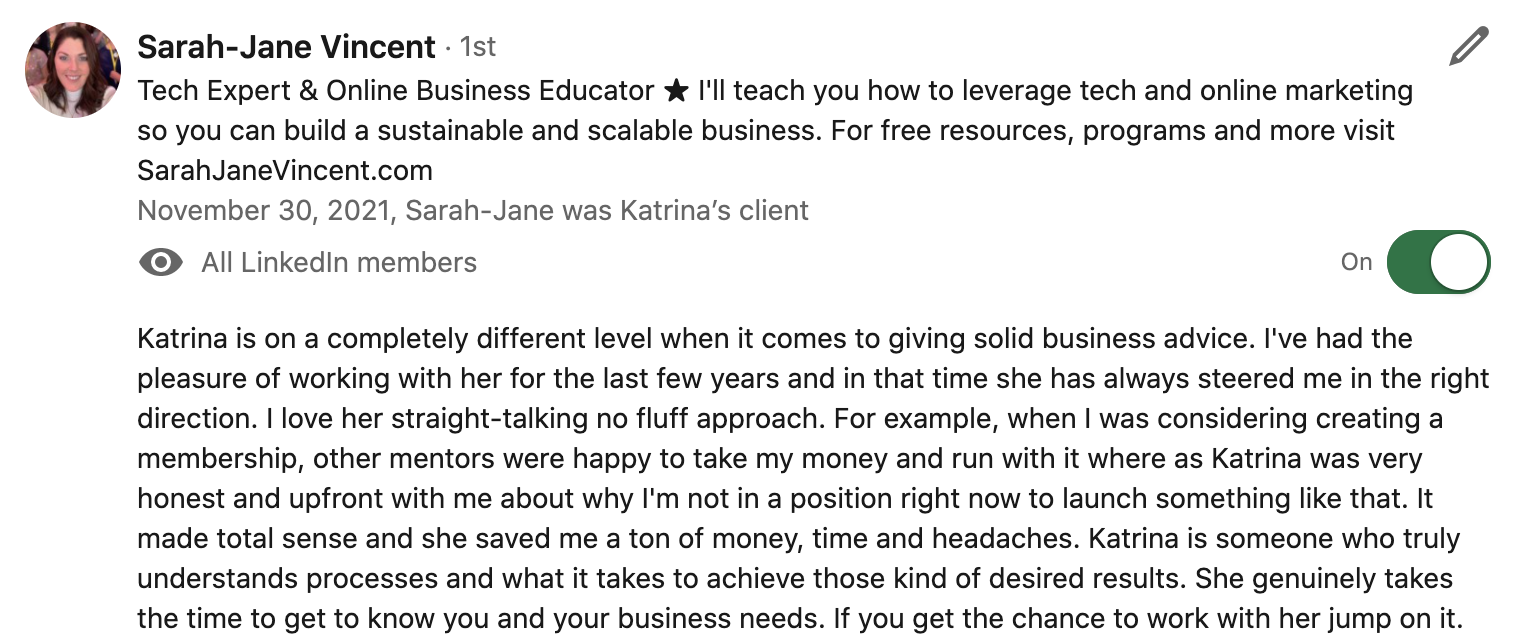Digitising your Business Operations - Funnel SOP's (standard operating procedures)
SOP library (standard operating procedures) - for launching a profitable Sales Funnel
In this blog, I have compiled a variety of standard operating procedures that will help you adopt digital processes, guidelines and procedures in your business. By using standard operating procedures as a framework for your business operations in particular sales funnel set up, audit and launch, you will be able to:
With all the human errors, creative chaos, and the “in-office politics” in an organisation or business, it is important to have a framework in place where your business can operate in a transparent and repeatable manner.
The first place every company should start with when thinking about prepping SOPs to be ready for digital transformation is to standardise their operations and processes across departments.
How to Digitise Your Business Operations: Guidelines for Creating a SOP Library
As you know, digitising your business operations can offer many benefits to the company. Apart from the obvious one of saving time and money, it also saves space and offers better security for your data. But how do you go about it? The first thing you need to do is decide what needs to be digitised. Writing a list of tasks that need to be completed will help you get started. This could include scanning documents, creating a digital archive or even just setting up an email address for your business. Once you've decided what needs to be done, it's time to put together a checklist. Here are some guidelines on how to create a SOP library for your business operations.
Many businesses and organisations rely on a set of procedures to guide their employees through a variety of activities. Whether it’s a manufacturing plant or an IT department, these procedures are often referred to as a ‘Standard Operating Procedures (SOP) library. Some businesses choose to keep their SOP library in a loose-leaf binder, others have gone digital with their documents and SOPs.
What's the purpose of your SOP library?
The SOP library is meant to provide the instructions and guidelines for completing tasks in your business. It's an important part of digitising your operations because it helps you create a more efficient workflow.
Decide what needs to be digitised
In order to digitise your business, you need to decide what needs to be done. Before you start anything, make a list of the tasks that need to be completed. This should include scanning documents or creating a digital archive. If you're not sure what needs to be done, ask yourself these questions:
- Which documents need to be scanned and stored?
- What kind of information do I need for my digital archive?
- Do I want my staff members to have their own email addresses at work?
Write a list of tasks that need to be completed
The first step to digitising your business operations is to list the tasks that need to be completed. This will help you better understand how much work needs to be done and what steps need to be taken. The list can include tasks like scanning documents, creating a digital archive, or setting up an email address for your business.
The essential tool that I use to create SOPs and Funnel Checklists
Process Street - I use 'Process Street', check it out here - Create and assign checklists. Add conditions, approvals, and automations. The simplest way to manage repetitive work in your team.
Ultimate SOP Guide: Standard Operating Procedures Made Easy (Free Templates!) You can find a link here to create an account.
As with SOPs, implementing business process management (BPM) can be an incredibly valuable tool, but only when used correctly.
A successful BPM system can:
Lower company costs
Boost revenue
Minimise risks
Encourage compliance
Improve productivity
Increase customer satisfaction
Help achieve a competitive advantage
Streamline your company processes
“Process Street is a type of BPM software. You can use Process Street to build a powerful, actionable library of SOPs which people can follow as checklists.” - - Source Process Street Blog
Some thoughts on preparation
Before you begin writing your SOP, it’s important to prepare for your procedure by:
Choosing a platform
Deciding on a consistent layout
Choosing the specific procedure to document
While making these decisions and preparations, keep in mind that this will be the foundation for your SOP and ultimately, its success. Source Process Street blog
Best practices for writing SOPs
After you’ve made all of your preparations, it’s time to begin writing your SOP.
Here is a summary of what you’ll need to do at this stage:
Conduct a meeting with teams that will be responsible for this procedure
Begin with a brief introduction
List all of the required resources
Jot down the current procedure
Add supporting media to build context if needed
Add any necessary resources
Review the procedure and edit if necessary
Test procedure in a controlled environment
Make improvements based on observations during the test run, if needed
Implement
- Source Process Street Blog
Here’s a couple articles where we go further in-depth about how to write SOPs:
Or, if you think this all sounds like it will take too much time, check out our super-fast short read on how to start your SOPs as quickly as possible:
How to Create Business Systems Even When You Have No TimeAfter you’ve made all of your preparations, it’s time to begin writing your SOP. - Source Process Street Blog
Here is a summary of what you’ll need to do at this stage:
Conduct a meeting with teams that will be responsible for this procedure
Begin with a brief introduction
List all of the required resources
Jot down the current procedure
Add supporting media to build context if needed
Add any necessary resources
Review the procedure and edit if necessary
Test procedure in a controlled environment
Make improvements based on observations during the test run, if needed
Implement
Here are a couple articles where we go further in-depth about how to write SOPs:
How to Write a Procedure: 13 Steps to Eclipse Your Competition - Source Process Street Blog
What is an SOP? 16 Essential Steps to Writing Standard Operating Procedures - Source Process Street Blog
Or, if you think this all sounds like it will take too much time, check out our super-fast short read on how to start your SOPs as quickly as possible:
How to Create Business Systems Even When You Have No Time - Source Process Street Blog
**Disclaimer: Links in the description are typically affiliate links that let you help support the channel at no extra cost.
Have you ever wondered how many businesses actually have Standard Operating Procedures (SOPs) in place? Have you been wondering what one really is and how it can help your business grow? I know I have. Keeping business operations on track is a matter of a few variables: People, Processes and Tools. If any one of them is out of balance, your organisation will surely suffer. Here I share solutions based on my own experiences as an entrepreneur and former Management Consultant.
As a start-up, or even an established business you want to be sure that your new Sales Funnel is built to last. You don't want to spend money on customers who never become repeat customers. That's why it's important to have a well-designed QA process in your Sales Funnel, to test your ideas before you launch the idea, and again after you launch it.
Have you ever needed to see how a colleague handles a process? Do you need to clarify how a person in your business performs their duty? Create your Business SOP Library create activity logs, documents, images and voice messages.
With the fast-paced nature of running a business, it can be hard to keep track of your company's operational aspects.
Guidelines for creating a Sales Funnel SOP library
1. Decide what needs to be digitised in the repeat sales funnel process, an example QA testing
The first step is to decide what needs to be digitised. You may decide that it's only important to digitise a few things, or you could want to go for the whole process and have everything in digital form to enable a speedy set-up.
2. Make a list of what needs to be done
Now that you know which tasks need doing, make a list of them. This will help you stay on track and avoid forgetting anything important.
3. Create an SOP library
Once you've completed the first two steps, it's time to create some guidelines for your business operations so they can be followed when employees are carrying out tasks or completing projects. This is where an SOP library comes in handy as it includes all guidelines related to each task and project within the company. The library should include all the steps needed for each task and project, such as templates and checklists. It should also include any restrictions or rules that have been agreed upon within the company on how certain tasks should be carried out, such as using certain software programs or following a certain format when writing documents.
With the advent of cloud computing and a global movement towards paperless, digital operations, many companies find that their document management system is the first step to becoming a truly paperless efficient business.
Grouping all the SOPs will help you grow your company. In addition, you save time and money as well. You need to follow standard operating procedures in your business operations.
When it comes to your customers, you do not want to be the one who messes up! You want them to trust your brand and buy from your company again and again. How would you react if you face the above scenario? Would you lose the customer forever or can you fix the situation? The answer is standard operating procedure (SOP).
Operating procedures are meant to be a guide for your team on how your business should run. Generally, this is on an individual basis as every team member should have their own set of procedures to follow. However, due to the nature of some operations, there might be common areas of operations that are the same for all employees, and therefore can be put together in a standard operating procedure.
Checklist for creating an SOP library
Before you start digitising your business operations, you need to come up with a list of tasks that need to be completed. This could include scanning documents, creating a digital archive or even just setting up an email address for your business.
Once you've decided what needs to be done, it's time to put together a checklist. Setting up a checklist will ensure that you don't miss any important steps and make sure everything gets done in the right order.
Here are some guidelines on how to create an SOP library for your business operations:
-Research and decide which software would best suit your operation needs
-Inventory all the physical documents (paper files) that need digitisation
-Document the steps needed for all the tasks and create operating instructions
-Checklists allow for clearly documenting each step from start to finish so cross-referencing is easier
Conclusion
Developing an SOP library is one way to ensure that your business operations are running efficiently and without any errors. An SOP library can be used in many different ways, from educating new employees to ensuring that tasks are being completed as expected. It is important to consider the purpose of your library and the tasks that need to be digitised. Picking the right SOP library software can make all the difference when it comes to completing your project on time.
You can find out further solutions here, if you are looking for a Digital Business Transformation partner to audit, review and build your Digital Business Process steps.
Looking for Sales Funnel Funnel Management, Audit or Strategy? Check out the solutions here.
Affiliate Disclaimer:
Some links that appear in this article are affiliate and referral partners and I may be compensated should you sign up. I do not endorse or promote any tools, saas or platforms that I do not use or have experience of. My audience, stakeholders, clients, students, customers and prospects mean the world to me ❤️


















